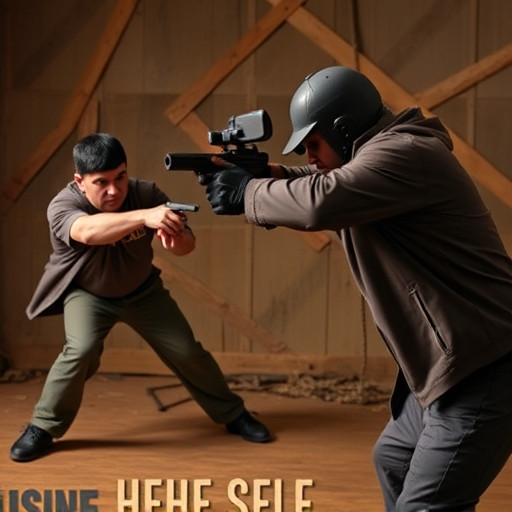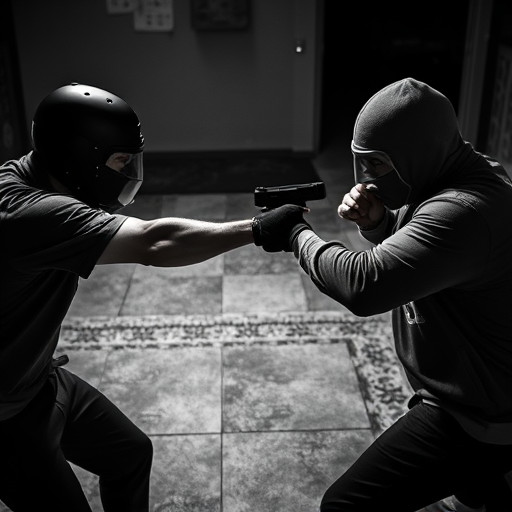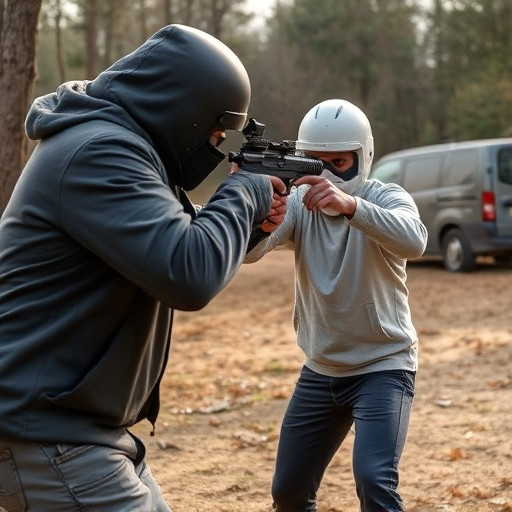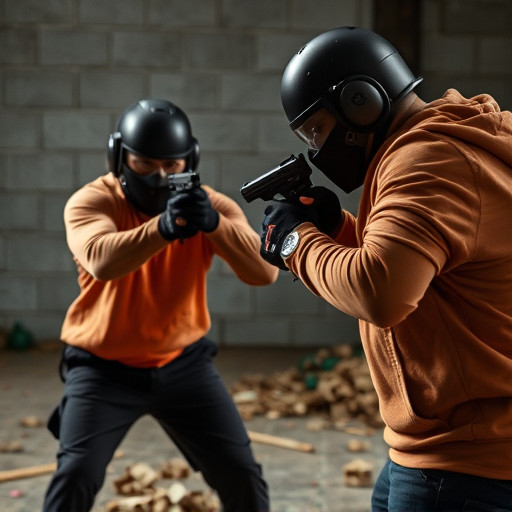Empowering College Students: Safe Stun Gun Mechanisms and Legal Navigations
Accidental discharges of self-defense stun guns on college campuses are a growing concern due to the…….
Accidental discharges of self-defense stun guns on college campuses are a growing concern due to their potency and non-lethal nature. While these devices offer personal protection, user error, inexperience, and environmental factors can trigger unintended activations. To mitigate risks, comprehensive training and education are crucial for students using these tools responsibly. Incorporating advanced safety features in stun guns, clear instructions, and regular workshops further ensure safe handling. Understanding varying legal frameworks governing self-defense stun guns is essential for college students considering them, with regulations differing significantly by region and institution.
Accidental discharge of self-defense weapons, including stun guns, poses significant risks. This article explores comprehensive strategies to prevent such incidents, focusing on self-defense stun guns as a popular choice among college students. We delve into understanding the causes and mitigating risks, examining tools like self-defense stun guns, designing safe mechanisms, providing training and education, and navigating legal considerations surrounding personal defense devices. By empowering users with knowledge, we aim to enhance safety while promoting responsible use of self-defense stun guns for college students.
- Understanding Accidental Discharge: Causes and Risks
- Self-Defense Stun Guns: A College Student's Tool for Safety
- Preventive Measures: Designing Safe Stun Gun Mechanisms
- Training and Education: Empowering Users with Knowledge
- Legal Considerations: Navigating Regulations for Personal Defense Devices
Understanding Accidental Discharge: Causes and Risks

Accidental discharge, especially in high-risk environments like colleges, poses a significant concern due to its potential for harm. Self-defense stun guns, increasingly popularized among students, are designed to mitigate such risks. These devices offer a non-lethal means of self-protection, but understanding the causes and risks associated with accidental discharges is paramount. One primary cause often lies in user error or inexperience, where improper handling or misunderstanding of the weapon’s functionality can lead to unintentional activation.
College students, new to the concept of personal defense, might overlook safety protocols, increasing the likelihood of accidents. Risks also stem from environmental factors; for instance, a stun gun could discharge unexpectedly during intense physical activity or when stored in proximity to flammable materials, creating a hazard. Therefore, comprehensive training and education on safe handling practices are crucial to ensure that students employing self-defense stun guns do so responsibly, minimizing the potential for accidental discharges.
Self-Defense Stun Guns: A College Student's Tool for Safety

College campuses, with their bustling environments and diverse communities, can sometimes pose unique safety challenges for students. As young adults navigating this new phase of life, ensuring personal security is a top priority. Self-defense stun guns have emerged as a popular and accessible tool for college students seeking to protect themselves in case of unexpected dangers. These compact devices offer an easy-to-carry solution, allowing users to feel empowered and prepared while on campus.
For many students, the appeal lies in their non-lethal nature, providing a means of self-defense without escalating situations. With a simple push of a button, these stun guns deliver a powerful electric shock, temporarily incapacitating an assailant, giving the user precious time to escape and seek help. This technology is especially valuable in potential mugging or assault scenarios, where split-second decisions can be life-altering. By investing in self-defense stun guns, college students can take proactive measures to enhance their safety while embracing the freedom of higher education.
Preventive Measures: Designing Safe Stun Gun Mechanisms

In the context of self-defense stun guns for college students, designing safe mechanisms is paramount to preventing accidental discharges. These devices often rely on complex electrical and mechanical systems, so incorporating robust safety features is essential. Simple measures like secure triggers, smart sensors that detect intent, and overcurrent protection circuits can significantly reduce the risk of unintended activation.
Furthermore, clear user instruction and education play a vital role in safe deployment. College students should be trained to understand the proper handling, storage, and use of stun guns, emphasizing responsible ownership and minimizing potential hazards. Incorporating these preventive measures ensures that self-defense tools remain effective without compromising safety during critical moments.
Training and Education: Empowering Users with Knowledge

Training and Education play a pivotal role in accidental discharge prevention, especially when introducing self-defense tools like stun guns to college students. Armed with knowledge, users can confidently handle these devices, ensuring their safety and the safety of others. Educational programs should cover proper handling, including how to activate and store the weapon safely.
College students using self-defense stun guns for protection must understand the device’s mechanics and potential outcomes. This empowers them to make informed decisions during stressful situations, reducing the risk of accidental discharge due to inexperience or panic. Regular refreshers and interactive workshops can help keep users alert and prepared.
Legal Considerations: Navigating Regulations for Personal Defense Devices

In many regions, the possession and use of self-defense stun guns are governed by stringent legal frameworks designed to balance personal safety with public security concerns. For college students considering the acquisition of a self-defense stun gun, understanding these regulations is paramount. Laws pertaining to stun guns often vary widely between jurisdictions, with some states permitting their open carry while others restrict them to concealed use or demand specific licensing or registration.
Navigating these regulations requires diligence and research. Students should consult local, state, and federal laws to ensure compliance. Some regions may have exceptions for self-defense, allowing students to carry a stun gun without a permit under certain circumstances. Additionally, colleges themselves might have policies regarding the possession of personal defense devices on campus, so it’s crucial to check with the institution before making any decisions.
Accidental discharge prevention is paramount in ensuring self-defense stun guns serve their intended purpose safely. By understanding the causes and risks, designing robust mechanisms, providing training, and adhering to legal regulations, especially for college students considering self-defense stun guns, we can foster a culture of responsible personal safety. These measures not only protect users but also promote public trust in self-defense tools, making them effective game changers in navigating the hustle and bustle of daily life.


